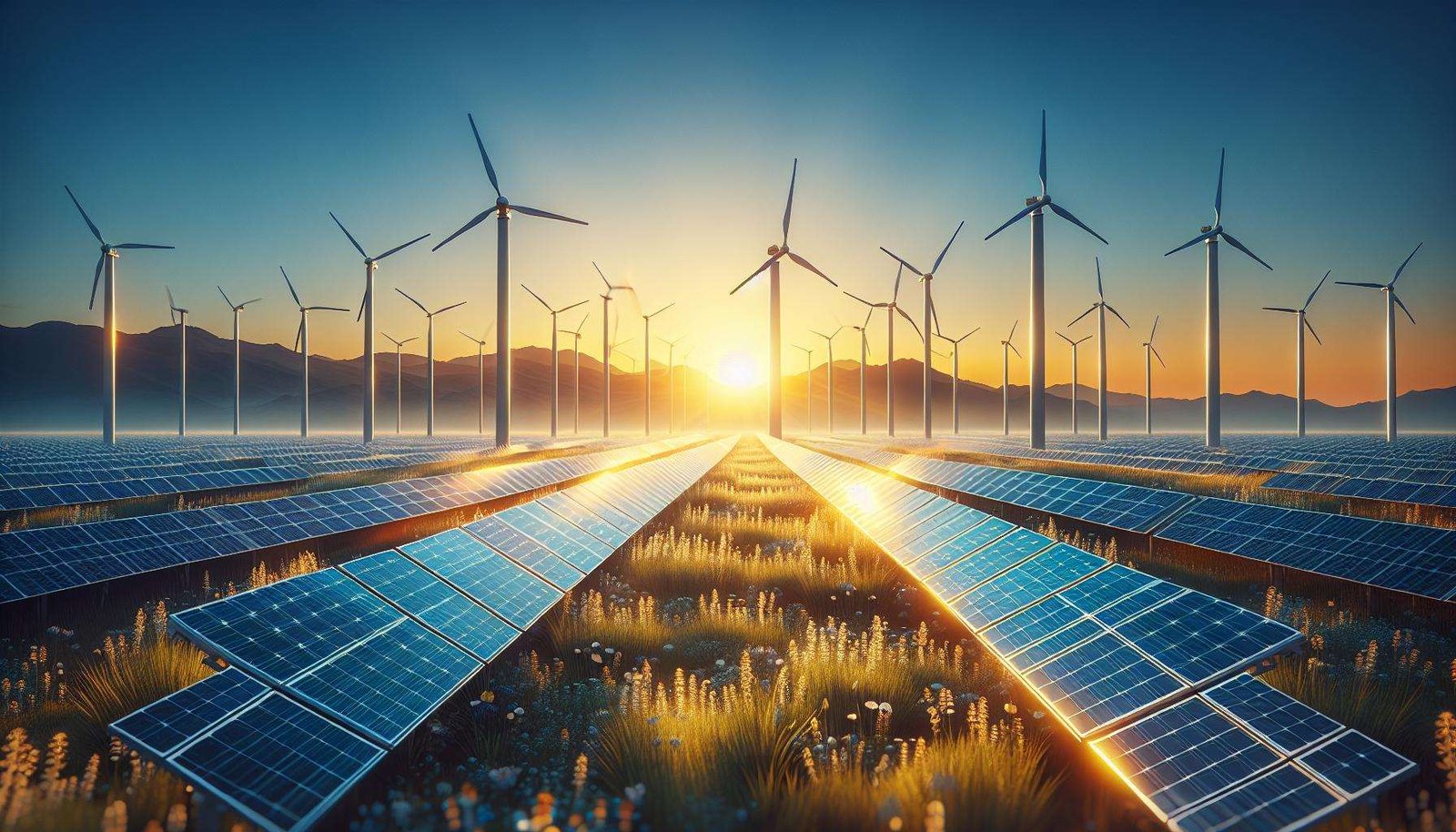
It is quite easy to get depressed about the state of the world these days – so some good news is welcome. And though your stock portfolio may be tanking or increasing on any day – one thing is assured and consistent – the acceleration of renewable energy production.
In a groundbreaking development for global sustainability, clean energy sources powered 40% of global electricity in 2024, as reported by a comprehensive energy review by Ember Energy. This milestone reflects significant progress in the fight against climate change and marks a pivotal shift in the way we harness and use energy. As the world races to curb carbon emissions, the increased reliance on renewable energy sources such as wind, solar, and hydropower represents a promising leap towards a more sustainable future.
Understanding the Clean Energy Milestone
To appreciate the significance of the fact that clean energy now powers 40% of electricity globally, it helps to take a closer look at what ‘clean energy’ means. Clean energy refers to power generated without releasing greenhouse gases. Sources like solar panels, wind turbines, and hydropower are prime examples because they convert natural processes into electricity without burning fossil fuels, thus not emitting carbon dioxide into the atmosphere. This detailed article on greenhouse gases provides further insight into why reducing emissions is crucial for our planet’s health.
The Technologies Behind Clean Energy
The major contributors to this clean energy surge are solar and wind technologies. Solar power harnesses the sun’s energy using solar panels composed of photovoltaic cells. These cells convert sunlight directly into electricity. Wind power, on the other hand, uses wind turbines; the wind turns the turbine blades, spinning a generator to produce electricity. These technologies have become significantly more efficient and affordable over the past years, leading to widespread adoption and a notable increase in their energy mix globally.
The International Renewable Energy Agency (IRENA) reports that the cost of solar power has dropped by about 89% over the last decade, making it one of the most cost-effective energy sources available. Wind energy costs have also decreased by approximately 70% within the same timeframe, further fueling this global energy transition. This decrease in cost not only attracts environmental advocates but also appeals to businesses and governments aiming to reduce overhead expenses while participating in sustainable practices.
Environmental Benefits and Challenges
Relying on clean energy contributes significantly to combating climate change by reducing the amount of greenhouse gases released into the atmosphere. According to the U.S. Environmental Protection Agency, power generation from fossil fuels is one of the largest sources of carbon emissions globally. By substituting these with renewable energy, we can make a considerable dent in reducing global warming effects and extreme weather conditions.
However, the transition to clean energy is not without its challenges. One of the primary hurdles is integrating renewable energy sources into existing power grids that were designed for fossil fuels. This can require significant upgrades and investments in infrastructure to ensure consistent and reliable power delivery. Moreover, issues like energy storage, when there is no sunlight or wind, remain critical technical challenges. Innovations in battery technology and grid management continue to push the boundaries, but there is still work to be done to fully stabilize these systems. As we move forward, continued research and development, public policy support, and community-level initiatives will be essential in overcoming these hurdles.
Policy Implications and Global Perspectives
In response to these developments, many countries have established ambitious renewable energy targets as part of their national policy and climate commitment under agreements like the Paris Accord. The increased utilization of renewable energy translates into political shifts as well. Countries that traditionally placed heavy reliance on oil, coal, and natural gas are now pivoting towards policies that foster sustainable energy investment and infrastructure development.
Globally, leaders are beginning to see the benefits not just in carbon reduction but also in energy security and economic resilience. The International Energy Agency highlights how countries like China and the United States have made substantial investments in renewable technologies, which also contribute to new job opportunities and technological innovation.
The Road Ahead for Clean Energy
While the 2024 statistic of 40% clean energy in global electricity is a positive step, it also serves as a reminder of the work still needing to be done. However, intense heatwaves led to a surge in electricity demand, prompting a slight uptick in fossil fuel use and pushing power sector emissions to a new all-time high.
Countries must continue setting and striving to meet ambitious renewable energy goals to continue progress. Collaboration across borders to share technologies and innovations will be crucial. Moreover, individuals can play a role by advocating for policies that promote clean energy and by making conscious decisions that reduce carbon footprints, like supporting companies that use sustainable practices.
This advance in clean energy signals a significant turning point. Keeping the momentum going will involve both global and local efforts towards innovation, investment in technology, and public policy adaptation. As we continue along this path, clean energy is not just an alternative; it is progressively becoming the norm, pointing us towards a potentially greener and more sustainable future.
For an in-depth understanding of how clean energy powered 40% of global electricity in 2024, visit this insightful article on global electricity powered by clean energy.
The post Clean Energy Powers 40% of Global Electricity in 2024: Milestone Report appeared first on Green.org.














